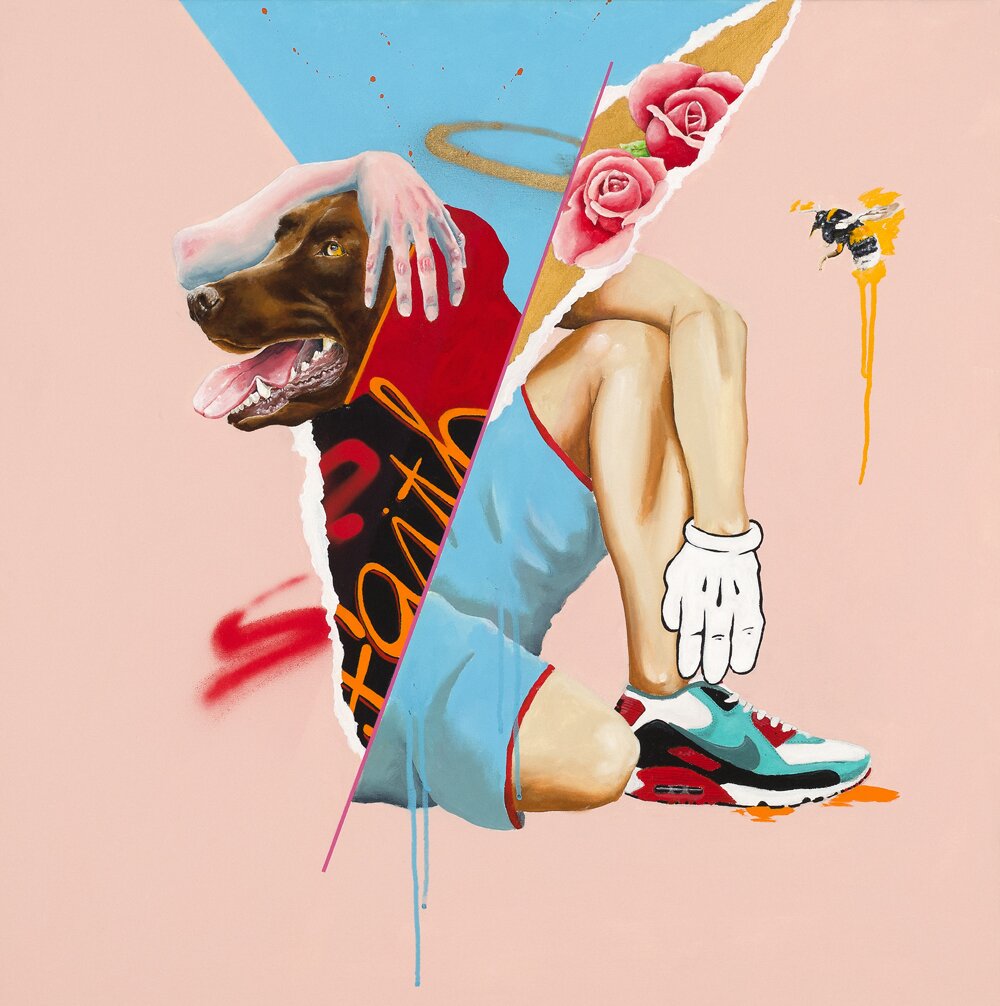
Is Street Art Fine Art? Tabish Khan tells us.
This week we bring you part 2 of art critic, Londonist art critic Tabish Khan ahead of the final weeks of the Secret Art Prize, who will be on the panel of judges. This week we hear how the art world is twisting for against Street Art merging into Fine Art.
Read Part One here .
It’s easy art!
Jonathan Jones of The Guardian has always been a staunch critic of Banksy for the reason that his work has no depth. Once you see it, you get the message and can move on. Banksy doesn’t hold the viewer like a Van Gogh or a Titian where you can stare at them for hours and continue to pick up small nuances and attention to detail.
This instant hit, also derogatorily referred to as easy or gimmicky art, is used to tar much of contemporary pop art and many mixed media works as well. This is why you won’t see so called ‘serious’ art critics reviewing these shows or the more ‘academic’ galleries taking these artists on.
It’s a snobbery that still persists in the art world, shows no sign of abating and means that abstract and conceptual art are more often lauded by critics, curators, gallerists and art fairs. For example, the one part of Frieze London that isn’t determined by the wealth and fame of gallerists, is the section dedicated to young and emerging galleries - and last year the dearth of representational art was clear to see.
Some may consider this to be about information asymmetry – abstract and conceptual art isn’t always easy to understand and this imparts those ‘in the know’ with a certain power and influence over the uninitiated, including the general public.
But there’s more to this argument and it largely comes down to fear – a fear that art will be dumbed down and follow in the footsteps of other industries. In the film industry, special effects driven blockbusters often don’t bother with good acting and a solid script. The latest Transformers movie hasn’t even been released yet and it’s almost guaranteed to outperform any of the nine movies that were nominated for this year’s Best Picture at the Oscars.
It’s this fear that has much of the art industry on edge. At the moment the best selling artists are those universally respected by both the art industry and the general public – the likes of Cezanne, Francis Bacon, Van Gogh and Picasso; but will it remain this way?
Of all the divisive artists operating today, Damien Hirst, has been the most commercially successful in spite of mixed critical reviews. And it may be inevitable that other such artists may achieve a similar level of success even if they aren’t critically acclaimed.
It’s this fear of the perceived dumbing down of art that terrifies many people in the art world and has them worried that the wheels may fall off the contemporary art wagon. It isn’t unfounded, and there is a lot of sense in protecting certain art forms so they are preserved even if they aren’t overly popular.
But this isn’t sufficient justification to belittle urban art and surely a happy medium can be found where all forms of art are judged equally by their own individual merits?
A different perspective
It is important to take a step back and ignore what the art world cognoscenti are saying and just focus on the simple question of ‘what is art meant to be?’.
Art is about expression and is also a reflection of the society in which it was created.
The world today is all about the instant fix, Twitter limits us to 140 characters, people chart their lives through Instagram and get frustrated when the next Underground train is five minutes away.
In this world of quick wins and ‘right now’ culture, surely the art that best reflects it is something that you can recognise and appreciate instantly? If we follow this logic then it means that urban art is the art of today and is a creative expression of the society we live in. This would lead us to conclude that in 2014, urban art is one of the truest and purest forms of expression.
Answering the question
So is street art fine art? Given that fine art is just a term invented to segregate art from craft, design and architecture, then yes it is.
But as for whether the art world will ever fully embrace it, this question is still up in the air. But the fact that impressionism and pop art were both dismissed in their respective eras, yet now form an essential chapter in the history of art, gives us hope.
Given that art has reached a point where it is so broad that it’s almost impossible to create something radically different, street art may go down as the last chapter in the history of art and for this reason alone deserves to be held up alongside other forms of fine art.
Only time will tell if street art will be noted as a significant art movement in the history of art, when we look back 50 or 100 years from now. As for my view, street art is definitely a form of fine art, but how long before art genres merge and there’s no such thing as street art any more?
Thank you Tabish!
Keep uptodate with the Secret Art Prize here @CuriousDuke and Tabish @LondonArtCritic.
.png)
Written by Curious Duke Gallery blogger Sinéad Loftus.
Lover of all art and fluffy cats.


.jpg)
.jpg)
